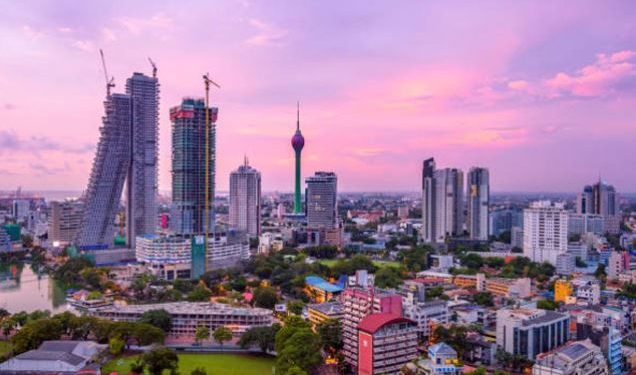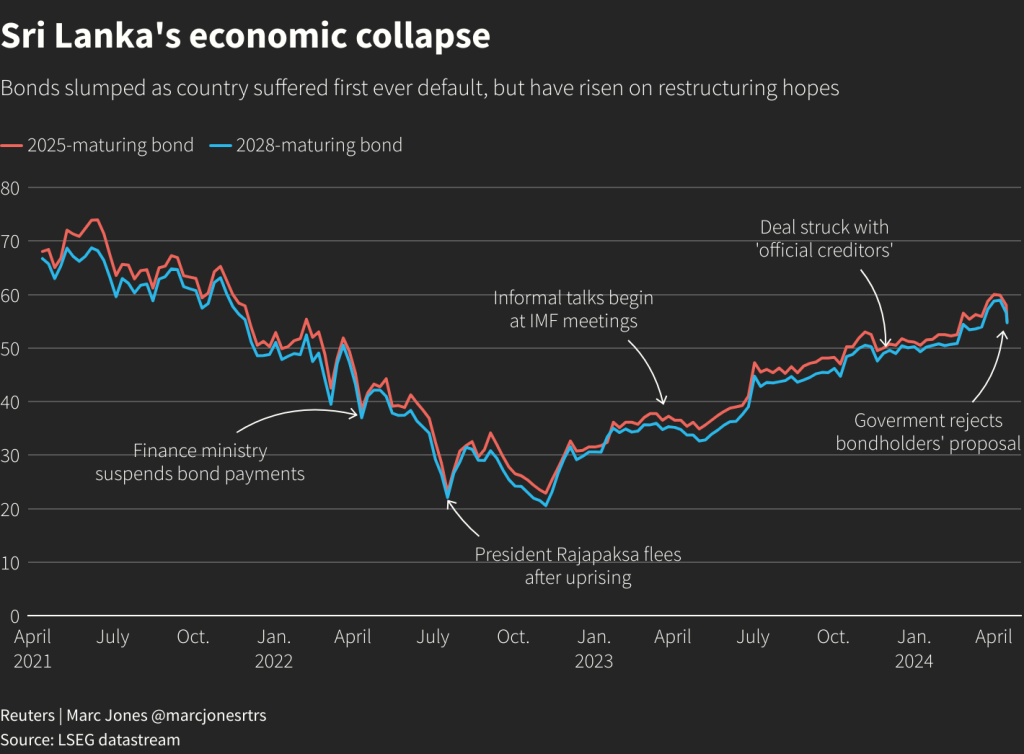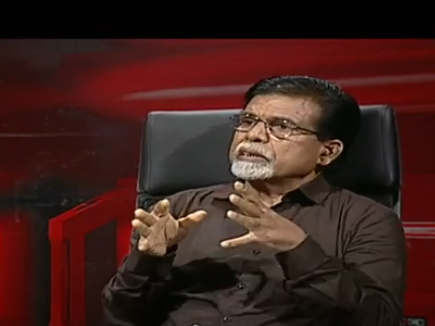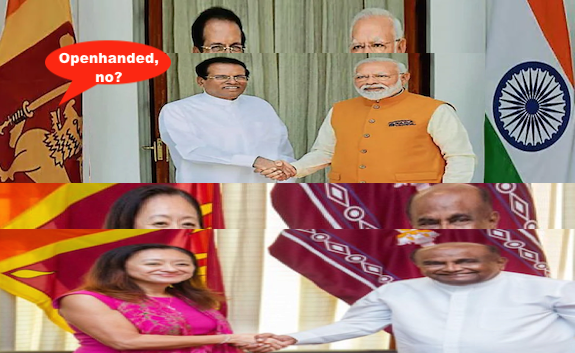මුළු ලෝකයේම සුළු ජනකොටස් අතර වැඩිම අයිතිවාසිකම් හා වරප්රසාද භුක්ති විඳින සුළුජන කොටස් ඉන්නේ ශ්රී ලංකාවේ?
April 21st, 2024ආචාර්ය සුදත් ගුණසේකර මහනුවර
එහෙත් වැඩිම මැසිවිලි නගන්නේත්, ඊනියා ජාත්යන්තරය ලවා මානව අයිතිවාසිකම් උල්ලන්ඝනය ගැන දොස් නගන්නේත් සිංහල බෞද්ධයින්ට, ඒ අනුව වැඩිම හානිය සිදු කරන්නේත් ඔවුන්, ඒත් ලෝක අනුකම්පාව ලබාගන්නේ ඔවුන්.ඒ ඇයි?
මෙසේ වීමට හේතු රැසක් ඇත. මා දකින අන්දමට ඒවා පහතින් දක්වමි.
1.සිංහල රටේ සිංහල දේශපාලනඥයින්ට මේ රට, එහි ඉතිහාසය, තම ජාතිය හෝ ජනතාව ගැන කිසිම අවභෝධයක්,හැඟීමක් හෝ ආදරයක් නොමැතිවීම
2 ඔවුන්ට රටට වඩා, සිංහල ජාතියට වඩා සුළුජන චන්ද වටිනාකමින් වැඩිවීම
3 මේ රටේ පෞරුෂත්වයක් සහ කොන්දක් නැති දේශපාලකයින් බටහිර රටවල් සහ ඉන්දියාව ඉදිරියේ නිවට වීම සහ බියගුළුවීම
4 මේ රටේ සිංහල බෞද්ධයින් විනාශ කිරීමේ සහ ඉන්දු-පැසිපික් කලාපයේ බටහිර ජාතීන්ගේ ආර්ථික සහ යුධමය බල තුලනය තහවුරු කර ගැනීම සඳහා ක්රියාහ්මක කෙරෙන කූටෝපායන් නොතේරීම සහ එයට මුහුණ දිය යුතු ආකාරය ගැන ඔවුන් තුල දැක්මක් හෝ අවභෝධයක් නැති වීම
සහ
5.මේ රටේ සුළුජන කොටස් දෙමළ ඩයස්පෝරාව සහ මුස්ලිම් ඩය්ස්පෝරාවේ බලය සහ උපායන් අභිභවා යාමට ශ්රී ලංකා රජය අපොහොසත් වීම.
ලංකාවේ මානව අයිතිවාශිකම් උල්ලන්ඝණයගැන කතා කරණ සියළු දෙනාම ම්ධ්යස්ථව මේ ප්රහේලිකාව ගැන සිතා බැළිය යුතුයි.
සිංහලයෝ
මානවයාට පමණක් නොව සියලුම සත්වයන්ට මෛත්රීය, මුදිතාව, කරුණාව සහ උපේක්ඛාව පතූරුවන එකම ආගමවු බුද්ධාගම මුල්බැස වසර 2328 ජනතා හදවත් වල තැන්පත් වී ඇති මේ රටේ මානව අයිතීන් උල්ලන්ඝනය වනවායයි කීම අමු මුසාවකි. ළෝකය පුරා සිටින විවිධ ජනවර්ග වලට ඉතා ඈත පුරාණයේ සිටම පිලිසරණවූ ලංකා බෞද්ධයාට සමකළ හැකි ජාතියක් ලෝකයේම නැත. එහෙත් තම ජාතියේ පැවැත්මට හානිකරණ අන්දමින් කිසිවෙකු ක්රියාකළ හොත් , තම ජාතියේ ආරක්ෂාවට අවෂ්ය පියවර නොගන්නා බවක් ඉන් අදහස් නොකෙරේ. වර්ෂ 2500 ක ඉතිහාසය පුරාම ක්රි.පූ 2 වන සිය වසේ සිට 1948 දක්වාම එය සිදුවී ඇත. එහෙත් තම ජාතියේ සහ රටේ පැවැත්ම සඳහා එවැනි පියවර ගැනීම මානව අයිතීන් උල්ලන්ඝනයක් සේ කිසිවෙකුට අර්ථ කථනය කළ නොහැක.
උදාහරණ වශයෙන් දැනට වසර 250 කට පමණ පෙර ඕලන්ද කාරයින් සහ ඉන්ග්රීසීන් විසින් ඔවුන්ගේ වහල් මෙහෙයට ඉන්දියාවෙන් මෙහි ගෙන ආ මලබාර් වැසියන් සහ අන්ත දරිද්රතාව නිසා රැකියාවක් සොයා මේ රටට හොරෙන් සන්ක්රමණය වූවන් වසර 2500 පාරම්පරික අයිතියක් ඇති සින්හලයින්ගේ මේ රටෙන් උ.නැ. හිරින් 1/3ක් ඉල්ලා යුධ වදින විට ඊට එරෙහිවී රට රැකගැනීමට පියවර ගැනීම, අයි. එස්. අයි. නමැති ලෝක මුස්ලිම් ත්රස්ථවාදීන්ස්ථාන 8 කදී මේ රටේ අහින්සක මිනිසුන් 273ක් මරමින් 500 අන්ගවික කොට බෝම්බ ගසනවිට සහ වහබ් වාදීන් මේ රටේ අවුරුදු දහස් ගණනක් පැරණි සින්හල බෞද්ධ ශිෂ්ඨාචාරය විනාශ කරනකොට ඊට එරෙහිව පියවර ගැනීම සහ මේ රටේ සමස්ථ ජීවි පද්ධතියේම පැවැත්ම සහ ශිෂ්ඨාචාරය තීරණය කරණ මධ්යම කඳුකරයේ බෞතික ස්ථාවර භාවය ඉන්දියාවෙන් ඔවුන්ගේ තේ වතුවල වහල්වැඩට ගෙන ආ සුද්දන් ඔවුන් යනවිට මෙහි දමා ගිය ඉන්දීය දෙමළ කුලී හමුදාවක් විනාශකරනවිට රටේ හා ජාතියේ පැවැත්ම සඳහා ඊට එරෙහිවීම මානව අයිතීන් කඩකිරිමක් වශයෙන් අර්ථ දක්වන්නේ කෙසේදැයි මම අසමි.
මුළු ලෝකයේම සුළු ජනකොටස් අතර වැඩිම අයිතිවාසිකම් හා වැඩිම වරප්රසාද භුක්ති විඳින සුළුජන කොටස් ඉන්නේ ලන්කාවේ.ඇත්ත වශයෙන්ම මේ රටේ ජාතිය වූ සිංහලයින්ට පවා එතරම් වර ප්රසාද නැත. (උදාහරණයක් ලෙස දේශපාලන ක්ශේෂ් ත්රයේ කිසිම කේවල් කිරීමේ බලයක් නැති ලක්ෂ 70 ක් පමණවූ උඩරට සිංහලයින් ගැන සඳහන් කළ හැක).එහෙත් හැමදාම නෝක්කඩු කියන ඒ මදිවාට මේ සිංහල රටෙනුත් කොටස් ඉල්ලා සටන් කරණ ඒ වගේම සියගණන් මිනිසුන් මරා තමන් ජීවවන මාර්ගය උපයාගන්නා රටට අලාභ හානි කරන අරුම පුදුම ලන්කාවේ සිටින දෙමළ සහ මුස්ලිම් සුළු ජන කොටස්වල දේශපාලන බලය අසීමිතය.
මේ රටේ ජාතිය සිංහල. ඊට අමතරව ප්රධාන සුළු ජන කොටස් දෙකක් ඉන්නවා. ඒ දෙමළ සහ මුස්ලිම්.
සිංහලේ භූමිපුත්රයෝ සිංහලයෝ.
ක්රි.පූ 543 දී මේ රට සොයාගත්තේ සිංහල මිනිස්සු. ඔවුන් සිංහලයින් උනේ සිංහල භාෂාව නිසා. ක්රි. පූ 307 මහින්දා ගමනයෙන් බුද්ධාගම ස්ථාපිත වීමෙන් පසු සිංහල ලයින් බෞද්ධයින් උනා. ඒ වගේම 543 සිට අද දක්වාම මේ රටේ සිංහල ශිෂ්ඨාචාරය ගොඩනැගුවේත්, ක්රි. පූ. 307 සිට සිංහල බෞද්ධ ශිෂ්ඨාචාරය මෙහි ගොඩ නැගුවේත් සිංහලයෝ.එම නිසා ඔවුන් තමා මේ රටේ ජාතිය සහ අයිතිකාරයෝ. භූමිපුත්රයෝ.එය මේ රටේ සිටින දෙමළ, මුස්ලිම් මිනිසුන් පමණක් නොවෙයි මුළු ලෝකයම පිළිගතයුතු පරම සත්යක්.
ශ්රී ලන්කාවේ දෙමළු
දැන් උතුරු නැගෙනහිර රටෙන් 1/3 කට අයිතිවාසිකම් කියන ඊයේ පෙරේදා ආපු දෙමලුන්ගේ මුතුන්මිත්තන්ම, තමා ක්රි. .පූ. 2 වන සියවසේ සිට ක්රි.ව. 12 වන සියවස දක්වා 17 වතාවක්ම මේ රට ආක්රමණය කරලා විනාශ කළේ. ඔවුන් කළ විනාශයන් මහාවන්ශය ඇතුළු පොත් පත්වල මෙන්ම රටපුරා තිබෙන දෙමළ ආක්රමනිකයින් සිදුකළ විනාශයන් පෙන්වන සිංහල බෞද්ධ නටබුණ් වලින්ම පේනවා.ඔවුන් ඉතිහාශය පුරාම මේ රටේ සිංහල බෞද්ධ ශිෂ්ඨාචාරය විනශකලා මිස, සිංහලයින්ට එරෙහිව ක්රියා කලමිස, කිසිදාක මේ රටේ දියුණුවට කිසිවක් කළේ නැහැ.අදටත් ඒ තත්වය එසේමය.
වර්තමානයේ මේ රටේ සිටින සියලුම දෙමළ ජනයා පහත සඳහන් වර්ගවලින් එකකට හෝ අයිති වෙයි.
1 ක්රි. පූ. 2.වන සිය වසේ සිට මේ රට අක්රමණය කළ දකුණු ඉන්දීයානුවන්ගෙන් සටන්වලදී නොමැරී හෝ ඉන්දියාවට නොගොස් මේ රටේ ඉතිරිවි සිංහල බෞද්ධ සමාජයට අන්තර්ග්රහණය වු කොටස්
2 එදා සිට මෑතක් වනතුරු වෙලඳාමට මෙහි පැමිණ ස්වදේශීය සිංහල සමාජයට අන්තර්ග්රහණය වූ අය
3.1665න් පසු ඕලන්ද ජාතිකයින් හා 1797 න් පසු ඉන්ග්රීසීන් විසින් ඔවුන්ගේ වැඩබිම්වල සහ යාපනේ දුන්කළ වතුවල ට ගෙන ආ කුලීකරුවන් සහ උතුරු නැගෙනහිර ජන ශූන්ය පෙදෙස් වල පදින්චිකොට මේ රටේ සිංහල ජන අනුපාතය අඩු කිරීමට ඉන්ග්රීසීන් විසින් ගෙන ආ මලබා වහලුන් අතුරෙන් ඉන්දියාවට ආපසු නොගොස් මෙහි නතරවූ කීපදෙනෙක්
4 ඉන්දියාවේ පැවති අසීමිත දරිද්රතා හා රැකියාහිගය නිසා හොරෙන් පැමිණ මෙහි පදින්චිවූවන් (කල්ලතෝනීන්)
5. තාවකාලික වීසා බලපත්ර ඇතිව මෙහි පැමිණ අනවසරයෙන් සිටින අය
6.1838 සිට ඉන්ග්රීසීන් විසින් මධ්යම කඳුකරයේ තේ වතු වල සහ බටහිර කඳු බෑවුම්වල රබර් වතුවල කුලීකරුවන් මෙන් ගෙනවිත් 1948 සුද්දන් මේ රටින් යනවිට මෙහි අතරමන්කොට ගිය, රටක් නැති ජනකොටසක් වශයෙන් මෙහි දමාගිය ලක්ෂ 12 ක් පමණ සුද්දන්ගේ වතුවල වහල් කුළීකරුවන්ගෙන් පැවත එන්නන්
මේ අන්තිම කොටසට අයත් පුද්ගලයින්,
1)1948 න් පසු, 1948 අන්ක 18 ඉන්දු පකිස්තාන් පුරවැසි පනත යටතේ මේ රටේ පුරවැසි බව ලබාගත් අය
2)1962 සිරිමා සාස්ත්රී ගිවිසුම යටතේ ලන්කාවේ පුරවැසිකම ලබාගත් අය
3)සහ එම ගිවිසුම යටතේ ඉන්දියාවට පිටත්කර යැවු එහෙත් දෙමල දේශපාලකයින්ගේ බලපෑම මත වවුනියාවේදී දුම් රියෙන් බැස එහි කැලෑවේ අනව්සරයෙන් පදින්චි වූවන්,
4)1987 ජූලි 29 ජේ.ආර්/රජිව් ගිවිසුම යටතේ ,රටක පුර වැසිකම ලබාගැනීමට ලෝකයේ කිසිම රටක වලන්ගු නැති සමාදාන විනිස්චයකාරයකු ඉදිරියේ රුපියලක මුද්දරයක් මත අත්සකළ ලිපියකින් පුර වැසිබව ලබාගත් රුපියලේ වතු කමකරුවන් යන අය වශයෙන් කොටස් 4 කි. ගෙන් සමන්විත වේ
5. ඉහත සඳහන් කිසිම වර්ගයකට අයත් නැති රට පුරා විසිරී සිටින ජේ.ආර්.රජිව් ගිවිසුම යටතේ රුපියලේ පුරවැසිකම් ලබාගත් කල්ලතෝනීන් සහ ජිප්සීන්.
මොවුන් සියළු දෙනාටම පහත සඳහන් ලක්ෂන පොදුය
1 ඔවුන් දකුන් ඉන්දියවේ මළබා දෙමළ මිනිසුන්වීම
2 ඉතීහාසය පුරා ඉන්දියාවේ ජීවිතය දුෂ්කර නිසා මේ රටට පැමිණි අයවීම
3 දෙම්ළ භාෂාව කථා කිරීම
4හින්දු ආගම ඇදහීම. ණලලේ අලු ගෑම.
5.ඉන්දියාව තම මව් රට වෂයෙන් සැළැකීම
6.තම පෙකනි වැලේ මුල් කොටස තවමත් දකුණු ඉන්දියාවේ තිබීම
7.සිහිනෙන් පවා ඉන්දියාව දැකීම
8මේ රටට කිසිම ආදරයක් හෝ ඇල්මක් නැතිවීම සහ අනුන්ගේ කූඩුවේ බිත්තර දැමීමේ කොහාගේ ප්රතිපත්තිය අනුගමනය කිරීම
9. තම ජීවිකාව කරගෙනයාම සඳහා පමණක් මේ රටේ සම්පත් පාවිච්චි කිරීම.
10 ශ්රී ලන්කා ආණ්ඩුවටත් .ආර්ථිකයටත් සින්හ භූමිපුත්රයින්ටත් මහත් හිස රදයක් වීම
වසර 300 කටත් වඩා අඩු වහල් කුලී පදින්චිය ඇති මලබාර් කුළී කරුවන්ගෙන් පැවත එන විග්නේශවරන් අවුරුදූ 3000 ක උරුමයක් ඉල්ලයි.
මොවුන්ගේ මේ රට තුල පදින්චිය ගැන සඳහන් කිරීමේදී, විශේෂයෙන්ම වර්තමානයේ උ.නැ. හිර පදින්චි මළබා දෙමළ මිනිසුන්ට ලන්කාවේ ස්ථිර පදින්චිය ඇත්තේ වසර 300 කට අඩු කෙටි කාලයක් පමණි. (බලන්න: ඊළම් මිත්ත්යaavei හෙලිදරව්ව 2020.) කේ.එන්.එල්පෙරේරා-විශ්රාමික මහේස්ත්රාත්). අරුණාසළම් පොන්නම්බලම් විසින් ලන්කා- සිංහලේ දෙමළ වෂයෙන් ඔවුන් නම් කළේ 1911 දීය. ඒ අනුව ඔවුන් මේ රටේ දෙමළ වශයෙන් නම්කොට දැනට ගතව ඇත්තේ වසර 113 ක් පමණි. 1815 වනවිට මෙ කිසිවකු මෙහි නොසිටිය නිසා මොවුන් සියල්ලමද විදේශිකයින් වෂයෙන් සැලකිය යුතුය. ඒ තාක් දුරට ඔවුන් මේ රටේ රටවැසියන් නොවෙන නිසා ඔවුන්ද මේ රටේ රට වැසිකම නීත්යාණුකූලව ලබාගත යුතුය.
විග්නේස්වරන් වසර 3000 ක ස්ථිර පදින්චියක් හා උරුමයක් ඇතැයි කියන්නේ මේ අවුරුදු 300 ආගමන ජන කොට්ඨාශයකටය. විග්නේෂ්වරන් කියන පරිදි ළන්කාවේ තබා දෙමළ නිජබිම ඇති ඉන්දියාවේ හෝ මොවුන්ට වසර 3000 ක ඉතිහාසයක් ඇතයි සිතිය නොහැක. සුළුජන අසාධාරණකම් මෙන්ම ඔහු මේ සන්ක්යාවද සීයෙන් වැඩිකර ඇත
1838 න් පසු උඩරට තේ වතුවල කුලී වැඩට සුද්දන් ගෙනා දකුණු ඉන්දීය දෙමළ කම්කරු හමුදාව
සුද්දන් ගෙනා මේ කුලීකරුවන්ද 1948 වන විට මේ රටේ නීත්යානුකූළ රට වැසියන් නොවේ. මලයාල දෙමළුන්ද, 1815 වනවිට මෙහි නොසිටි නිසා සිංහලේ රට වැසියන් වීමට නම් ඔවුන්ද මේ රටේ රටවැසිකම නීත්යාණූකූළව ලබාගත යුතුය.1948 වනතුරු බ්රතාන්ය පුර වැසියන් වූ මොවුන් සියළුදෙනාම එක්කෝ ඔවුන්ගේ මුල් රට වූ ඉන්දියාවට නැතිනම්, ඔවුන් ඒ වන විට බ්රිතාන්ය පුර වැසියන් වූ නිසා එන්ගලන්තයට ගෙනයායුතුව තිබිණ. ඒ බවකීමට තරම් කොන්දක් හෝ මොළයක් ඇති සිංහල නායකයින් 1948 මේ රටේ නොසිටි බව පෙනේ.
1987 දි ජේ. ආර්.ජයවර්ධන ජනාධිපතිවරයා මේ සිංහල රටේ උතුරු න්නැගෙනහිරෙන් රටෙන් 1/3 ක් ඓතිහාසික දෙමළ නිජබිමක් වෂයෙන් පිළිගත්තේ මෙවන් පසුබිමකය. 1948 න් පසු මේ රටේ පාලනය භාරව සිටි පාලකයින් තමන්ගේම රට ගැන තිබුණු දැණුම සහ ආදරය මෙයින්ම පැහැදිළිවෙයි.
ඉර හඳ පෑයූ දා සිටම සිංහලයින්ගේ මාතෲ භූමිය වූ මේ රට, තමන්ගේ අයිතිහාසික මව් බිම වැනි ගල්පැලෙන ප්රබන්ධ කතා ගොතමින් මේ රටෙන් 1/3 ක කට අයිතිවාසිකම් කියන්නේ මෙවැනි කෙටි ඉතිහාසයක් ඇති සුද්දන්ගේ වහලුන් වූ, පසුකලක වෙල්ලාල නමින් බෞතීස්ම ලැබූ ඉන්දීය මළයාල දෙමළ ජන කොටසකි. මෙවැනි පුද්ගලයින්ට එරෙහිව 16 වන ව්යවස්ථා සන්ශෝධනය යටතේ දැන්වත් පියවර නොගන්නේ මන්දැයි මට නොතේරේ
වසර 37 තේ වතුකරයේ රුපියලේ පුරවැසි දෙමලුන්
ඉහතින් දැක්වූ වතුකරයේ බහුතරයද මේ රටේ පුරවැසිකම ලැබූයේ 1987 න් පසුවය. මෑතක සිට නාම් 200 මලයහ” (අපි කඳුකරයේ 200 වසරක්) වැනි වචන භාවිතා කරමින්,මොවුන්ද මලය නාඩුවක සිහින දකිමින්, මේ රටේ රට ගැන නොදන්නා, තම මව්බිමට හෝ ජාතියට ආදරයක් නැති කාලකන්නි දේශද්රෝහී සිංහල දේශපාලකයිගේ සහ මේ රට් ඉන්දියාවේ 29 වන ප්රාන්තය කර ගැනීමට මාන බලන ඉන්දීය දේශපාලකයින්ගේ සහ සදා කල්හිම සිංහල බෞද්දයින් විනාශකිරීමට ක්රියාකළ බටහිර ඊනියා ජාත්යන්තර නඬයේ සහායද ඇතිව මේ සිංහලයින්ගේ රටේ හදබිම” අල්ලා ගැනිමට අර අඳින බව පෙනේ.
පුරවැසි අවුළ.
1948 පනත යටතේ මේ රටේ රට්වැසිකම දෙන ලද්දේ අඛණ්ඩව වසර 10ක් මේ රටේ ස්ථිර පදින්චියක් තිබුණු ඔවුන්ගේ මව සහ පියා ලන්කාවි උපන් අයට පමණි. මොවුන් සෑම දෙනාම මෙන් අවුරුදු පතා තමන් හම්භකරගත් දෑ ඉන්දියාවේ බැන්කුවල තැන්පත් කිරීමට ගිය නිසා ඒ සුදුසුකම වැඩිදෙනෙකුට තිබුණේ ණැත.1962 සිරිමා සස්ත්රී ගිසුමද නිසියාකාරව ක්රියාත්මක වී නැත. 1987 ලබාදුන් පුර වැසිකම් වලන්ගු වුවද එම පුර වැසිකම්වල වලන්ගු භාවය කුමක් වුවද මේ වන විට එහි වයසද වසර 37 ක් පමණි.
9. මේ ලෝකයේ වෙනත් කිසිම රටක තබා ඔවුන්ගේම අයිතිහාසික මව් බිම වූ ඉන්දියාවේ පවා නැති තරම් අයිතිවාසිකම් භුක්ති විඳීම
ඉතිහාශය පටන්ගත්දා සිටම සිංහලයන් විසින් සොයාගෙන ,ශිෂ්ඨාචාරය බිහිකොට වසර 2566 ක් තිස්සේ එය වර්ධනය කොට ක්රි පූ 2 වන සියවසේ සිට මොවුන්ගේම මුතුන් මිත්තන්ගේ ආක්රමණ 17කින් මේ රට බේරාගෙන එසේම 1505 සිට 1948 දක්වා බටහිර යටත්විජිත වාදී කොල්ලකරුවන්ගෙන් සින්හලයින් විසින් ජීවිත පරිත්යාගයෙන් බේරාගත් මේ රට, එසේම ඊලාම්වාදීන් ගෙන් 2009 දී මහින්ද රාජපකෂ බේරාගත් රටට දැන් මොවුන් අයිතිවාසිකම් කියයි.1505 සිට 1948 දක්වාම ඉන්දියාවෙන් ගෙන ආ දෙමකුලී හේවායින් සටන්කළේද සිංහල යින්ට එරෙහිව සුද්දන්ට පක්ෂපාතීවය.
මුස්ලිම් වරුන්
ඉතිහාසයේ පළමුවරට 14 වන සියවසේ මුස්ලිම් වරුන් වෙළෙන්දන් වෂයෙන් මේ රටට පැමිණි බව වාර්තාවී ඇත.1505 වනවිට දිවයිනේ නිරිත දිග බේරුවල ප්රදේශයේ මොවුන් පද්න්චිව සිට ඇත. පෘතුගීසින් මොවුන් සමූළ ගාතනය කළ නිසා පණ බේරාගත් තවුන් එවකට සිංහලේ මහරජවූ සෙනරත් රජු බැහැදැක ආරක්ෂාව ඉල්ලා සිට ඇත. එම අවස්ථාවේදි පිරිසක් උඩරට රාජධානියේ තැනින් තැන පදින්චි කරණ ලදී.ඉන් එක් කොටසක් නැගෙනහිර මූදුබඩ ප්රදේශයක් වූ පානම පත්තුවේ පදින්චිකොට ඇත. එහෙත් ඉන් පසු ඉතිහාසය පුරාම මේ කෙළෙහිගුන නොදත් මුස්ලිම් වරුන්, කන්ට දුන් අත හපාකන්නවුන් සේ, ආක්රමනිකයාට ඔත්තු සැපයීමෙන් සහ වෙනත්සේවා සපයමින්, සිංහලයින්ට සහ මේ සිංහල දේශයට ද්රෝහීව ක්රියාකොට ඇත.
1818 සුද්දාගේ පැත්ත ගත් හජ්ජි මුහන්දිරම්ට සුදු ආණ්ඩුවෙන් දිසාපති පදවියක්
ඌව වෙල්ලස්ස නිදහස් සටණේදී සුද්දාගේ පැත්ත ගත් හජ්ජි මුහන්දිරම්ට දිසාපති පදවියක් දීම. මෑතකදී බේරුවල, මාවනැල්ල සහ දිගන වැනි සිද්ධීන් මොවුන්ගේ මෙ කෙළෙහිගුණ නොදත් සිංහල විරෝධී ක්රියාවන්ට කදිම උදා හරණය. ඒ සියල්ලටත්ම වඩා දරුණුම සිද්ධිය වුයේ 2021 සාන නමැති අයි එස් අයි ත්රස්ථයා දිවයිනේ ස්ථාන් 8 කදී පුහ්ගලයින් 273ක් මරාදමමින් තවත් 500 ගානක් අන්ග විකළ කරමින් රටේ ආර්ථිකයට විසාල පාඩුවක් සිද්ඩහකළ් සහරාන් නැමැති මුස්ලිම් ත්රස්ථවාදියාගේ බෝම්බ මාලාවය. ඒ සමඟම රට පුරා ක්රියාත්මක වන වහබ් වාදයය.1915 දී ගම්පොලින් ආරම්භවූ කෝලාහලය ද මුස්ලිම් වරුන්ගේ ත්රස්ථවාදයට කදිම උදාහරණයකි.
කෙසේ වුවත් අශ්රෆ්ගේ යුගය වන තුරු බෙදුම්වාදයක් ගැන ඔවුන් කථාකලේ නැත. මෙම ප්රවනතාව නැගී ආවේ නැගෙන හිර පලාතේ හිස්බුල්ලා සහ බස්නාහිර පලාතේ මුසාමිල් වැනි පුද්ගලයින්ගේ ක්රියාවන්ගෙන් පසුවය. ඒ අතරම වහබ්වාදීන් රට පුරා ක්රියාත්මක වීමට පටන් ගැනින. මෙවැනි ක්රියාවන් අතර දෙවනගල, කුරගල වැනි අයිතිහාසික අයිතිහාසික බෞද්ධ සිද්ධස්තාන, සහ නැගෙනහිර පලාතේ ඇතැම් ස්ථානවලද මුස්ලිම් ආක්රමණ ව්යාප්තවී ඇත. මේ සියලු අපරාධ මෙසේ ඩිදුවනතුරු සින්හල දේශපාලඥ්යෝ ඒ ගැන කිසිදු පියවරක් නොගෙන බලා සිටිති.
මේ සියල්ලටම ප්රධාන හේතුව වී ඇත්තේ 1948න් පසු මේ රටේ දේශ ප්රේමි, ජාති හිතෛෂි, ධූරදර්ෂී දැක්මක් ඇති මේ රට හා එහි ඉතිහාසය දන්නා එඩිතර සිංහල දේශපාලන නායකත්වයක් නොමැති වීමය. සිංහල කම සුද්දා ඒ තරමටම මොට කර දමා ඇත.
මෙවැනි ඛ්හේධනීය පසුබිමක මේ ර්ටේ මානවහිමිකම් ගැන කථාකරණ සියළු දෙනාටම මට දීමට ඇති පනිවිඩය මෙයයි.
මේ රට ඉතිහාසයේ ආරම්භයේ සිටම සිංහල. එය ලෝකයේ තිබුණු එකම් සිංහල බෞද්ධ රටය. එහෙත් ඒ තුල අද කිසිම කේවල් කිරීමේ දේශපාලන බලයක් නැති තම උපන් බිමේම අනාථයන් බවට පත්ව ඇති එකම පිරිස සින්හලයින්ය. ඒ අතරිනුත් තවත් සුවිශේෂී පිරිසක ඇත. ඒ ලක්ෂ 70ක් පමණවූ උඩරට සිංහලයින්ය.
සුදු ආණ්ඩුවෙන් හජ්ජි මුහන්දිරම්ට වෙලස්සෙ දිසාපති පදවියක්තමන් සතු මහපොලව සහ ජීවිත ඇතුලු සියළු දෙයක්ම ඔවුන්ට එදා ඒ සටනේදී අහිමිවිය. 1840 රජයේ ඉඩම් බලහත්කාරයෙන් අල්ලාගැනීමේ පනත, 1853 විහාර දේවාල ගම් පනත සහ 1897 මුඩුබිම් පනත වැනි කෲර පනත් වලින් ඔවුන්ගේ කුඹුරු සහ නිවාස පිහිටි ඉඩම් ඇතුළු සෙසු සියලුම ඉඩම් ඉන්ග්රීසි ආන්ඩුවට අත් පත් කරගන්නා ලදී.1818 සහ 1848 නිදහස් සටන්වලදී නොමැරි ඉතිරිවූවන් ඔවුගේ ගම් බිම් ගිනිතබා වියළි කලාපයේ වනාන්තරයට එලවා ගන්නා ලදී.
මෙසේ බලහත්කාරයෙන් අත් පත්කොටගත් උඩරට සිංහලයින්ගේ ඉඩම් සුද්දන් තේ වතු බවට හැරවීය. මුලු කඳුකරයම තේ වතු අධිරාජ්යක් බවට හැරවින. එම තේ වතු අධිරාජ්යයේ වහල් මෙහයට ගෙන ආ 12 ලක්ෂයක් පමණ වූ දකුණු ඉන්දීය කුලී හමුදාව පදින්චි කරවීය. මහපොලවේ නියම උරුමකරුවන් ගෙන් ඔවුන්ගේ ඉඩම් මේ ආකාරයෙන් බලහත්කරයෙන් ගත්තා පමණක් නොව එම වතු අධිරාජ්ය හරහා යාම පවා ඔවුන්ට තහනම් විය. එතැන් සිට එදා තම මව්බිමේ කඳුකරය පුරා පැතිරෙන තේ වතු අධිරාජ්ය දෙස බලමින් සුසුම් හෙලමින් මේ මහපොලව යලි තමන්ට ලැබෙන දිනය ගණන් කරමින් එදා සිටියහ. 1948 දී ඊනියා දේශපාලන නිදහසලබා වසර 76 ක් ගතව ඇති අද, සින්හල රටේ සිංහලයින්ගේම පාලනය යටතේ සුද්දන් ගියපසු එහි නියම උරුම කරුවන්ට එම ඉඩම් ආපසු ලබා දෙනු වෙනුවට සුද්දන්විසින් උන්ගේ තේ වතුවල වහල් මෙහෙයට ඉන්දියාවෙන් ගෙන ආ, 1987 දී ජේ.ආර්. විසින් රුප්පියලේ මුද්දරයකට ලබාදුන් වසර 37ක ලන්කා පුරවැසිකම සහිත ඉන්දීය දෙමල කම්කරුවන්ට, තමන්ගේම් චන්දයෙන් බලයට පත්වූ මැති ඇමතිවරුන් උත්සවත් ශ්රීයෙන් බෙදාදෙන ආකාරය දෙස අද ශෝසුසුම් හෙලමින් ඔවුන් බලාසිටි. වසර දහස්ගානක් සිංහලයින්ට උරුමව තිබුණු ඒ ඉඩම් අහිමිවීම ගැන, ඒ මගින් ඔවුන්ගේ ජන්මය උරුමය අහිමිවීමගැන මානවහිමිකම් පන්ඩිතයන් තබා ඔවුන්ගේම චන්දයෙන් පාර්ලිමේන්තුවට ගොස් සිටින සිංහල දේශපාලකයකු පවා වචනයක් කතා නොකරයි.
මේ ප්රදේශ නියෝජනය කරන සිංහල මැති ඇමැති වරුන් 75ක් පමණ සිටියත් ඒ එක මනුස්සයෙක් හෝ මව් බිමේ මුල් අයිතිකරුවන් වූ උඩරට ගැමියන්ගේ ඉරණම ගැන එක වචනයක්වත් කතා නොකරයි.මානව හිමිකම් අති පණ්දිතයෝද මුනිවත රකිති. ලන්කාවේ මෙන්ම ජාත්යන්තර මානව හිමිකම් කරුවන්ද කතා කරන්නේ සුළු ජනයාගේ අයිතිවාසිකම් පිලිබඳ පමණි. සිංහලයින්ගේ මානව අයිතීන් ගැන මේ කිසිවෙක් කතානොකරන්නේ ඇයි සිංහලයින් මානවයින් ගණයට නොවැටෙන ජාතියක් නිසාදැයි මම අසමි.
අහෝ වීර කැප්පෙටිපොල, ඇහැලේපොල පරම්පරාවෙන් පැවැත එන සින්හලයෙනි. මේ පාවදීම දෙස නිහඬව බලා සිටින්නේ ඇයි ?
1815 මාර්තු 2 උඩරට ගිවිසුමේ 2 වන වගන්තියේ සිංහලේ ආණ්ඩු කිරීමට දෙමළවර්ගයාට ඇත්තාවු සියළුම අයිතිකම් නැතිකර තවද විනාශකරන්ඩ යෙදුණු වග මෙයින් එළිදරව් කරණුය” යණුවෙන් සඳහන්ව ඇති බවද මෙහිදී සඳහන්කළ යුතුය.
එබඳු නෛතික පසුබිමක් තිබියදීත් ඒ කිසිවක් නොසලකා රටේ හා ජාතියේ හදවත බඳු මධයම කඳුකරය එසේම වසර 310 පුරා යුධමය වශයෙන් රට රැකගත් මධයම කඳුකරය ක්රි පූ 2 වන සිය වසේ සිට මේ රටට විනකළ දකුණු ඉන්දීය දෙමළ පරම්පරාවකින් පැවත එන පිරිසකට සිංහල චන්දවලින් බලයට පත්වූ මේ රජය විසින් සින්නක්කර ලියා දීම කොතරම් නම් මේ රටේ ආරක්ෂාවට තර්ජනයක් දැයි රජයට නොතේරේනම් ඔබ අපවත් එක්ව ඊට විරෝධය දක්වා අපි අපේ රට බේරා ගමු.
ඉහතින් දැක්වූ පසුබිම තුල මේ රටේ සුළු ජනකොටස් වලට මෙන්ම ඔවුන්ගේ චන්දය මේ රටේ සිටින දෙමළ, මුස්ලිම් ඇතූළු සියළුම සුළුජනකොටස් පසුපස හිඟමනේ යන සියලුම දේශපාලනඥයින්ට ප්රඥාව පහල වීම සඳහා පහත දැක්වෙන කරුණු ටික මම කියමි.
මේ රටේ සිටින දෙමළ, මුස්ලිම් ඇතූළු සියළුම සුළුජන කොටස් පහත සඳහන් ප්රඥප්තීන් අවිවාදයෙන් පිළිගත යුතුය,
ඉහතින් දැක්වූ පසුබිම තුල මේ රටේ සුළු ජනකොටස් වලට මෙන්ම ඔවුන්ගේ චන්දය පසුපස හිඟමනේ යන සියලුම දේශපාලනඥයින්ට මම මේ ටික කියමි.
ඇමුණුම1
සිංහලේ/ශ්රී ලංකා ජනසම්මතවාදී සමාජවාදි
ජනරජය
සින්හලේ/ ශ්රී ලංකා ජාතික ප්රඥප්තිය
මේ සිංහල බෞද්ධ රටේ ඒකීය භාවය,බහුමික අඛණ්ඪතාව, පරමාධිපත්ය,ජාතික එකමුතුකම ජනවාර්ගික හා ආගමික සන්හිඳියාව, සමඟිය සහ සාමය ආරක්ෂාවීම සඳහා කිසිවෙකු විසින් සාකච්චා නොකළහැකි, සාකච්චා නොකළයුතු ප්රතික්ෂේප නොකළහැකි, නොකළයුතු, කරුණු ඇතුලත් ජාතික ප්රඥප්තියක් නීතිගත කිරීම
පළමුව මෙම සියළුම පාර්ෂව පහත සඳහන් ප්රඥප්තීන් මේ රටේ වෙනස් නොවෙන ජාතික පදනම වෂයෙන් අවිවාදයෙන් පිළිගත යුතුය
ජනසම්මතවාදී සමාජවාදි ජනරජය
සිංහලේ/ ශ්රී ලංකා ජාතික ප්රඥප්තිය
මේ සිංහල බෞද්ධ රටේ ඒකීයභාවය,බහුමික අඛණ්ඪතාව, පරමාධිපත්ය,ජාතික එකමුතුකම, ජනවාර්ගික හා ආගමික සන්හිඳියාව, සමඟිය සහ සාමය ආරක්ෂාවීම සඳහා සාකච්චා නොකළහැකි, සාකච්චා නොකළයුතු ප්රතික්ෂේප නොකළහැකි, නොකළයුතු, පහත සඳහන් ප්රඥප්තීන් වෙනස් නොවෙන ජාතික රාජ්යයේ පදනම වෂයෙන් සිංහලේ වාශී සියළුදෙනාම අවිවාදයෙන් පිළිගත යුතුය
(එම කරුණු ඇතුලත් ජාතික ප්රඥප්තිය ව්යවස්ථාගත කෙරේ)
සිංහලේ/ ශ්රී ලංකා ජාතික ප්රඥප්තිය
එක්සත්, ප්රබල, සව්භාග්යමත්, හා සාමකාමී ශ්රී ලාන්කික ජාතියක් ගොඩ නැගීම සඳහා මේ රටේ සියළු දෙනාම (රටවැසියන්)) ඒකමතිකව පිළිගත යුතු ජාතික සම්මුති මාලාවක් පහත දක්වමු.
එය සිංහලේ/ශ්රී ලංකාවේ ජාතික ප්රඥප්තිය නමින් හඳුන්වමු
1ශ්රී ලංකාව සිංහල ජාතියේ අයිතිහාසික මාතෲ භූමිය වේ.
කි.පූ. එය 543 සොයාගත්තෝද, එහි සිෂ්ඨාචාරය බිහිකලෝද එසේම ක්රි.පූ. 2 වන සියවසේ සිට 1987 දක්වා,ඉන්දීයාවෙන් සහ යුරෝපීය රටවලින් පැමිණි සියලු පර සතුරු ආක්රමණයින්ගෙන්, ජීවිත පරිත්ත්යාගයෙන් මේ රට ආරක්ෂාකොට ගත්තෝද ඒ තුළ ශිෂ්ඨාචාරය බිහිකලෝද ඔවුහුම බව පිළිගැනීම.
2. එහි නාමය සිංහලේ/ශ්රී ලංකාවිය යුතුය
ඉතිහාසය පුරාම මේ රට හැඳින්වුයේ ශ්රී ලන්කාවේ ලේ, සිංහලද්වීප වශයෙනි.එසේම ශ්රී ලංකා, ලංකාධ්වීප කියාද එය වන්ශ කථාවල හඳුන්වා ඇත. 1815 මාර්තු 2 උඩරට ගිවිසුමෙන් බ්රතාන්යට භාරදී ඇත්තේද සිංහලේ නම්වූ රාජධානියයි. එම ගිවිසුමේ සිංහලේ නමින් හඳුවන ලද්දේ මේ සමස්ථ සිංහල ලධ්වීපය ඇතුළු ඒ හාත්පසින් වූ මාලදිවයින් ඇතුළු දූපත් සහිත සමුද්රයයි.1972 ජනරජ ආණ්ඩුක්රම ව්යවස්ථාවේ පළමුවරට එය ශ්රී ලන්කා කියා හඳුන්වයි. එම නිසා මෙහි සඳහන් එකී නම්වලින් හැර වෙනත් කිසිම නමකින් එය හැඳින්වීම දඬුවම් ළැබිය හැක.
සිංහලේ කියාද ජාත්යන්තර වෂයෙන් ශ්රී ලංකා කියාද එය භාවිතා කළ හැක. එහෙත් ඒ සෑම අවස්ථාවකදීම සිංහලේ යන්න වරහන් තුල සඳහන් කළ යුතුය.
1815 මාර්තු 2 උඩරට ගීවිසුම අනුව ඉන්ග්රීසීන්ට භාරදී ඇත්තේද සිංහලේ නම්වූ රාජධානියයි. එබැවින් ඇත්ත වශයෙන්ම රටේ නිවැරදි නම වූ සිංහලේ යන්න ලබාගත යුතුව තිබුණේ,1948 දී රටේ බ්රතාන්ය පාලනයෙන් රට භාරගත් අවස්ථාවේදීමය. එය අපි දැන් යලිත් ස්ථාපිත කරමු.
3. සිංහලේ/ශ්රී ලංකාව සිංහල බෞද්ධ රාජ්යයකි.
ශ්රී ලංකාව ″කි.පු. 307 සිට අඛණ්ඩව පැවති පරිදි සිංහල බෞද්ධ රාජ්යයකි. එසේම එය ලෝකයේ ඇති එකම සිංහල බෞද්ධ රාජ්යයද වෙයි.
4.ශ්රි ලංකාව ඒකචත්ර රාජ්යයකි
(ලෝක ඉතිහාශය ආරම්භවූ දා සිටම ඉන්දීය සාගරයේ පිහිටි සිංහලද්වීපය නම්වූ, වර්ගසැතපුම් 25,332 (65,610 කි.මී)පමණ වු මේ දිවයින, ඒකචත්ත්ර සිංහල රාජ්යයක් වශයෙන් පැවත ඇත. ඒ අඛණ්ඩ සම්ප්රදායයි. එබැවින් කුමණ පදනමක් මත හෝ මේ රට බෙදීමට යෝජනා කිරීම හෝ එසේ කිරීමට තැත් කිරීම මරණ දඬුවම ලැබිය හැකි වරදකි.
5. මේ රටේ ජාතිය සිංහල වේ.
දෙමළ සහ මුස්ලිම් ඇතුළු සෙසු සියළුදෙනාම එම සිංහලේ, සිංහල ජාතිය තුල මේ රටේ ජාතිය සිංහල බව පිළිගන්නා රටවැසියන් වන ජන වර්ග පමණි.
6. මේ රටේ රාජ්ය භාෂාව සිංහල විය යුතුය. ඒ අණුව අධිකරණයේ ඇතුළුව රජයේ සියළුම කටයුතු සිදුකළයුත්තේ සිංහලෙන් පමණි.
7. ක්රි.පූ 307 දී සිට අඛණ්ඩව පැවති පරිදි මේ රටේ රාජ්ය ආගම බුද්ධාගම විය යුතුය. කෙසේ වුවද සෙසු ආගමික ලබ්ධීන්ට ඔවුන්ගේ ආගම් ඇදහීමේ නිදහස පමණක් සහතික කෙරේ.
8. මේ රටේ ජාතික කොඩිය යළිත් 1815 තිබුණ සිංහලේ කොඩිය විය යුතුය.
9. මේ රටේ ජාතික ගීය නමෝ නමෝ මාතා යනුවෙන් ආරම්භවන ආණ්ඩුක්රම ව්යවස්ථාවේ සඳහන් ගීය වේ. ජාතික ගීය දිවයින පුරාම ගායනා කළ යුත්තේ රටේ රාජ්ය භාෂාව වන සිංහලෙන් පමණි. වෙනත් භාෂාවකින් එය ගැයීම දඬුවම් ලැබිය හැකි සාපරාධී වරදකි
10. මේ රටේ තිබිය යුත්තේ මුලු රටටම බලපාන පරිදි එක
නීතියක් පමණි–එය 1815 ට පෙර සිංහලේ වන මේ රටේ
තිබුණු සිංහල නීතිය සහ එහි ඌණ පූර්ණ සඳහා ආදේශකොට ගත් වර්තමාන රෝම ලන්දේසි නීතියේ සම්මිශ්රණයකි.
(එය සකස්කිරීම සඳහා සිංහල නීතිය සහ රෝම ලන්දේසි නීතිය පිළිබඳ විශාරධයින්ගේ මණ්ඩලයක් පත්කෙරේ).
දැනට පවතින පරිදි මුස්ලිම් නීතිය සහ තේශවලාමේ නීතිය මේ සිංහල රට තුල සපුරා තහනම්ය
11. මේ රටට පූර්ණ වශයෙන් ව්යවස්ථාදායක,විධායක සහ අධිකරණ නිදහස ලබාගත්තේ 1972 මැයි 22 දා ජනරජයක් වෂයෙන් ප්රකාශ කිරීමෙන් පසු බැවින් මේ රටේ සැබෑ නිදහස් දිනය වියයුත්තේ මැයි 22 දිනය වේ.
12. මේ රටේ,ජනාධිපති, අගමැති, අග්රවිනිස්චයකාරයා, නීතිපති, ත්රි විධ හමුදාපතිවරුන්, සහ පොලිස්පති හැමවිටම සිංහල බෞද්ධයින්ම වියයුතුය.
13. මේ රටේ තිබිය යුත්තේ ජාතික දේශපාලන පක්ශ දෙකක් හෝ උපරිම 3 ක් පමණි. ආර්ථික ප්රතිපත්ති වල වෙනස්කම් අනුව ජාතික දේශපාලන පක්ෂ දෙකක් හෝ තුනක් තිබිමට ව්යවස්ථාවෙන් අවසර දිය හැක.
14. මේ රටේ මධ්යම කඳුකරය, ලංකා හදවත මෙන් රැකගත යුතුය.
(මන්ද මේ රටේ සකළවිධ ජීවී පද්ධතියේ මෙන්ම ශිස්ඨාචාරයේ පැවත්මේ ඉරණම රඳා පවත්නේ එහි භෞතික ස්ථාවරත්වය මත නිසාය. එමනිසා එහි වනාන්තරයට, භූමියට, පසට, ජල සම්පත් වලට හෝ ජීවී පද්ධතියට හානි සිදුකරණ්නන්ට මරණ දඬුවම දිය යුතුය+7)
1. මධ්යම කඳුකරයේ මු. ම. අඩි 5000 ඉහල සෑම ප්රදේශයක්ම. අධිරක්ශි ප්රදේශ වශයෙන් ප්රකාශ කෙරේ.කිසිම වගාවක් හෝ ජනාවාශයක් මේ තුල සපුරා තහනම්ය. එසේම රාජ්ය අවසරයකින් තොරව එහි ඇතුල්වීම පවා මරණ දඬුවම ලැබීමේ වරදකි
11. අඩි 3500-5000 අතර විශාල තේ වතු තිබුණද ඒ තුළද සෑම වර්ගයේම ජනාවාශ තහනම්ය.
111.කඳුකරයේ සියළුම ජනාවාශ අඩි 3500 යේ සීමාවෙන් පහල ප්රදේශ වලට සීමා කෙරේ.
කඳුකරයේ 1000-3500 අතර ප්රදේශය ශ්රී ලංකා හදබිම අධිකාරියේ නිර්දේශිත ගම්මිරිස්,කරාඹු,කෝපි,එනසල්, පලතුරු වැනි මිශ්ර භෝග සහ, ගෘහස්ථ සත්ව පාලනය (ගව, එළු.කුකුල් සහ මීමැසී) සහිත කුඩා ගොවිපල ව්යාපාර සඳහා වෙන්කළ යුතුය.
මධයම කඳුකරය වටේ දිවෙන මෙම තීරුවේ උඩරට ඉඩම් නැති ගොවියන් ප්රමුඛ කොට උඩරට 3500 න් ඉහළ තේ වතු වලින් ඉවත් කෙරෙන දෙමල කම්කරුවන් මිශ්ර ගම්මාන වශයෙන් පදින්චි කළයුතුය. එසේ පදින්චි කිරිමට අපේක්ෂිත ගොවි පවුල් ගණන 2,50,000 කි. මෙසේ කිරීමෙන් උඩරට වතු දෙමළ ප්රශ්නයද සදහටම අවසන්වණු ඇත.
15 මේ රටේ ජාතික ආර්ථිකයේ මුල්තැන ගොවිතැනට දිය යුතුය.ඉනුත් වී වගාවට ප්රමුඛත්වය දිය යුතුය. ඒ සඳහා අවශ්ය ජලය,පොහොර, කෘෂිරසායනික, ව්යාප්ත සේවා අලෙවි පහසුකම් සහ සහතික මිල ක්රමයක් ආදි සියළු සේවා සහ පහසුකම් රජයෙන් ලබා දිය යුතුය.
16 රටේ ආර්ථිකය, සන්වර්ධනය, සන්ස්කෘතිය සහ අධ්යාපනය ආදිය පිලිබඳ ආණ්ඩු මාරුවීමත් සමඟ වෙනස් නොවෙන ජාතික ප්රතිපත්තියක් තිබිය යුතුය.
17 මේ රට බහුජාතික,බහුආගමික,බහු වාර්ගික බහු භාසික රටක් යන සන්කළ්පය අපි මුළුමනින්ම බැහැර කෙරේ.
18.ක්රි. පූ. 327 සිට පණ්ඩුකාභය රජු විසින් නිර්මිත ගම මේ රටේ ශිෂ්ඨාචාර්යේ මෙන්ම සන්වර්ධනයේද පදනම වේ
19.මෙම ප්රඥප්තියේ සඳහන් නියමයන්ට එකඟ නොවෙන කිසිවෙකුට මේ රටේ රටවැසිබව ලැබීමට හෝ මෙහි දීර්ග කාලීනව රැඳී සිටිමට නීතියෙන් තහනම්කළ යුතුය
20. මීට පටහැනිව කථා කිරීම, ලිවීම හෝ කුමණ අන්දමේ මේ ක්රියාවක යෙදෙන ඕනෑම පුද්ගලයෙකු පැය 24 ක් තුල රටින් පිටුවහල් කිරීමේ බලය සින්හලේ/ශ්රී ලංකා රජය සතු වේ.
සේ සිංහලයින්ගේ රටෙන් කොටස් ඉල්ලා සිටින සුළු ජාතිකයින්ට පණිවිඩයක්
මේ රටේ රට වැසියන් වශයෙන් පදින්චිව සිටීමට නම්, මෙම ප්රකාශනයේ සහ ප්රඥප්තියේ අතුලත් සියළු කරුණු සහ කොන්දේශි පිළිගත යුතුය. එසේ කිරීමට එකඟ නොවන ඕනෑම කෙනෙක් සිටීනම් ඔවුන් අපේක්ෂාකරන එම අයිතිවාසිකම් භුක්ති විඳිය හැකි දේශයකට ඔවුන් යා යුතුය.
රුසියාවේ ජනාධිපති පුටින් සහ ඕස්ට්රේලියාවේ මීට මද කලකට පෙර සිටි අගමැති හෝවර්ඩ් කී පරිදි අපි මේ කිසිවෙකුට මේ රටට එන්ට කියා කිසි දවසක කියා නැත.සුද්දන් විසින් ඔවුන්ගේ වහල් මෙහෙයට ගෙන ඒමෙන් හෝ තමන්ගේම අව්ශ්යතාවට නීත්යාණුකූලව හෝ අනීතිකව හෝ ඔබලාම පැමිණියා මිස අපි ඔබලාට මේ රටට එන්ට කියා කිසි දිනක කීවේ නැත. ඔබලා මෙහි ආවේත් මේ පොලවේ පදින්චිව ඉන්නේත් ඔබලාගේම් උවමනාවට මිස අපගේ ඉල්ලීමකට නොවේ.
ඔබලාගෙන් අප රටට පාඩුවක් සහ කරදරක් මිස ලාභයක් නම්
කිසිදාක සිදුව නැත.මේ වනවිට තේ වලින් ලැබෙන ආදායමෙන් 65 % ලැබෙන්නේ කුඩා තේ වතුවලිනි. 12 ලක්ෂයකට ආසන්න වතු කුලී හමුදව නඩත්තුකරන්නේ රාජ්ය
භණ්ඩාගාරයෙන්ය. එම නිසා දෙමළ වතු ජනතාව මේ රටේ ආර්ථිකයට විශාල ආදායමක් ලබා දෙනවා කීම පට්ටපල් බොරුවකි. ඔවුන්ගෙන් වාසි ලබන්නේ දේශපාලකයින් පමණි ඇත්තවෂයෙන්ම මොවුන් අද මේ රටට දැරිය නොහැකි ආර්ථික,පාරිසරික සහ දේශපාලන බරකි. එසේම යෝධ පිළිලයකි.
එමනිසා මේ සින්හල රටේ සිංහල නීති අනුව අනුගතව සින්හල සමාජයට ඒකාබද්ධව මේ රටේ වැසියන් මෙන් සියළුම ඉන්දීය සම්බන්ධකම් සහ ආලවන්තකම් අත් හැර පෙර දවස සිදුවූ පරිදි මේ රටේ සින්හල සමාජයට අන්තර් ග්රහණයවී භූමිපුත්රනින් වන සින්හලයින් සමඟ සහයෝගයෙන් සිටීමට නොහැකිනම්, එසේම ඔබලා හිතන පත ආකාරයෙන් ජීවත් වීමට ඕනෑනම්, ඔබලාගේම නීතියෙන් පාලනය වීමට ඕනෑනම් අපගේ ශිෂ්ටාචාරයට හා ආර්ථිකයට හානිකර අන්දමින් මෙහි නොසිට කාරුනාකර ඔබලා මෙහි ඒමට පෙර සිටි ඔබලාගේ මව් රටවලටම වහාම ආපසු පිටත්ව යනු මැනවි.
ඉහතින් දක්වා ඇති පරිදි මේ රට, වසර 2566 ක් පුරා සිංහලයින්ගේ රට. ඔවුන් සොයාගත්, ඔවුන් ශිෂ්ඨාචාරය ගොඩනැගූ, වසර 2566 ක් පුරා සියලු පරසතුරන්ගෙන් ජීවිත පරිත්යාගයෙන් ආරක්ෂකොට ගත් රට.
ඔබ සැමට යන්ට රටවල් ඇත. ඒ ඔබලාගේ මව් රට වලය.ඒ අනුව දෙමලුන්ට ඉන්දියාව්ද මුස්ලිම් වරුන්ට ඔවුන් මෙහි ඒමට පෙර සිටි ඔවුන්ගේ අරාබි ලෝකයේ රටවලද ඇත.
ඔබ සියළු දෙනාම දන්නා පරිදි සිංහල අපට ව.සැ 25,332 ක් වූ මේ කුඩා දිවයි හැර මේ ලෝකයේ කිසිම තැනක බිම් අඟලක්වත් නැත.
එමනිසා අපේ රටේ අපේ නීති රීති අනුව සිටීමට ඔබට නොහැකිනම් අප සමඟ අමනානප නොවි කරුනාකර ඔබලාගේම මව් රටවලට පිටත්ව යන මෙන් ඕනෑකමින් මම ඉල්ලා සිටිමි.
එසේ නොකලොත් මේ රටේ නීති කඩණ, මේ රටට කරදරයක් වන පිරිසක් වෂයෙන් සලකා ඔබලා මේ රටින් පිටුවහල් කිරීමට අපට සිදුවේvi.
එසේ නැතිව ඔබට මේ රටේම සිටිමට අව්ශ්යනම්, පෙර රජ දවස මෙන්, අපගේ සිංහල බෞද්ධ සමාජයට අනුගතවී මේ රටේ සිංහල බෞද්ධයන්වි අද සිට ඔබේ රට ඉන්දියාව නොව, මේ සින්හල ද්වීපයම වේ, එසේම් ඔබ තව දුරටත් ඉන්දියානුවෙකුනොව මේ සින්හලේ රට වැසියෙකි කියා අධිෂ්ඨානකොට ගෙන අප සමඟ දුක සැප බෙදාගෙන සිටින මෙන් යෝජනා කරමි.



 අමෙරිකානු අධිරාජ්යය බිඳවැටෙන සෑම විටම ඔවුන් විසින් ලෝකයේ යුදමය තත්ත්වයක් නිර්මාණය කරන බවද, ඊශ්රායලය ත්රස්තවාදී රාජ්යක් ලෙස අමෙරිකාව භාවිත කළේ ඛනිජ තෙල් වෙනුවෙන් අරාබි මුහුද, රතු මුහුදේ ගැටලුවක් නිර්මාණය කිරීමට බවද වෛද්ය වසන්ත බණ්ඩාර මහතා පවසයි.
අමෙරිකානු අධිරාජ්යය බිඳවැටෙන සෑම විටම ඔවුන් විසින් ලෝකයේ යුදමය තත්ත්වයක් නිර්මාණය කරන බවද, ඊශ්රායලය ත්රස්තවාදී රාජ්යක් ලෙස අමෙරිකාව භාවිත කළේ ඛනිජ තෙල් වෙනුවෙන් අරාබි මුහුද, රතු මුහුදේ ගැටලුවක් නිර්මාණය කිරීමට බවද වෛද්ය වසන්ත බණ්ඩාර මහතා පවසයි.